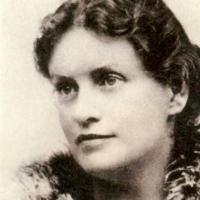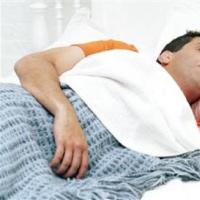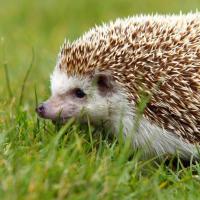Homemade brushless DC motor with your own hands. Three-phase brushless motor. Features of brushless machines
@@ The design features of CD-ROM engines are very different. Therefore, this article provides general recommendations for converting such engines at minimal cost into 3-phase aircraft model engines.
@@ Requirements for CD-ROM engines (data are given for engines that were actually redesigned):
- The number of teeth (poles) of the rotor must be 9
- Number of newly installed magnets - 12
- Rotor diameter: 28.5 mm
- Rotor height: 7.8 mm
- Axle diameter: 3mm
- Axle length: 6.8mm
- Stator diameter: 24 mm
- Stator height: 5.2 mm
- Weight of the converted engine - 21 g
- Winding type - delta
- Winding with wire with a diameter of 0.4-0.5 (preferably PETV)
- Number of turns - 17-20 per tooth



@@ Adhesives used: “111”, thread lockers (sold in auto stores).
@@ Epoxy resin used: any non-Russian or 5-minute resin.
Preparatory work
@@ A magnetized plastic ring is glued to the inside of the rotor. Remove it carefully. This can be done as follows: a bent and heated nail is inserted into the plastic. Let it cool and carefully pull out the plastic ring
@@ We disconnect the stator from the plate on which it is mounted (there are a lot of mounting options and therefore I do not present the technology - in each specific case, decide for yourself how to do this). Disconnecting the stator, carefully remove the winding from it, trying not to damage the factory varnish.
Rewind
@@ The stator is rewinded with a copper wire with a diameter of 0.4mm - 0.5mm. We wind from 17 to 20 turns on each pole.




@@ The fewer turns, the higher the revolutions; more turns produce higher torque. The wire insulation must remain intact - this is critical, otherwise your engine will not work.

@@ You can choose between delta and star winding types. With star winding, the motor will have higher torque, lower rpm and will "eat" less. Delta winding will produce a "hotter" motor with higher rpm and greater efficiency, but will have a greater "appetite" "and will heat up more. The star winding is "heavier" for the controller to operate.






Quality checking
@@ Checking the quality of winding is done with a multimeter. The wire MUST NOT be broken or have damaged insulation. The resistance of the windings should be approximately the same. The winding wires must not be short-circuited to each other or to the stator (in case of insulation damage). If you are not sure that there is no damage or shortness, remove the wound wire and rewind it again. Connect, secure and solder the winding terminals. Winding resistance ~ 0.1-0.14 ohms per phase.
Installing new magnets into the rotor
@@ VERY IMPORTANT - the magnets must be installed with the correct polarity - N-S-N-S..., otherwise your motor will not work. A good way to check polarity is to place 12 magnets on a table in a row and stick the magnets in the rotor shell in the same order. For gluing, use high quality glue (do not use epoxy resin for 5 minutes).



@@ Achieve uniform placement of magnets in the rotor shell. How you can do this: when installing magnets in a glass, line them with thin pieces of paper of the same thickness; if one of the gaps is larger, then increase the thickness of the paper. The distance between the magnets must be the same. Take the time to do this work. After installing the magnets and gluing them, fill the gaps between them with epoxy resin. Be careful not to overfill the resin.
Trial
@@ There should be no friction between the rotor and magnets. If the movement when cranking is without significant force and jolts, then you can try to start the assembled engine.
@@ YOU CAN change the direction of rotation by changing 2 of the 3 pins between the motor and the controller.



@@ Ready motors.


One of the reasons why designers are showing interest in brushless electric motors is the need for high-speed motors with small dimensions. Moreover, these engines have very precise positioning. The design has a movable rotor and a stationary stator. The rotor contains one permanent magnet or several located in a certain sequence. The stator contains coils that create a magnetic field.
One more feature should be noted - brushless electric motors can have an armature located both inside and on the outside. Therefore, the two types of design may have specific applications in different fields. When the armature is located inside, it is possible to achieve a very high rotation speed, so such motors work very well in the design of cooling systems. If a drive with an external rotor is installed, very precise positioning can be achieved, as well as high resistance to overloads. Very often, such motors are used in robotics, medical equipment, and in machine tools with frequency program control.
How motors work
In order to drive the rotor of a brushless DC motor, a special microcontroller must be used. It cannot be run in the same way as a synchronous or asynchronous machine. Using a microcontroller, it is possible to turn on the motor windings so that the directions of the magnetic field vectors on the stator and armature are orthogonal.

In other words, with the help of a driver it is possible to regulate which acts on the rotor of a brushless motor. To move the armature, it is necessary to carry out correct commutation in the stator windings. Unfortunately, it is not possible to provide smooth rotation control. But you can very quickly increase the rotor of the electric motor.
Differences between brushed and brushless motors
The main difference is that on brushless electric motors for models there is no winding on the rotor. In the case of commutator electric motors, there are windings on their rotors. But permanent magnets are installed on the stationary part of the engine. In addition, a specially designed collector is installed on the rotor, to which graphite brushes are connected. With their help, voltage is supplied to the rotor winding. The operating principle of a brushless electric motor is also significantly different.
How does a collector machine work?
To start a commutator motor, you will need to apply voltage to the field winding, which is located directly on the armature. In this case, a constant magnetic field is formed, which interacts with the magnets on the stator, as a result of which the armature and the collector attached to it rotate. In this case, power is supplied to the next winding, and the cycle repeats.

The speed of rotation of the rotor depends directly on how intense the magnetic field is, and the latter characteristic depends directly on the magnitude of the voltage. Therefore, in order to increase or decrease the rotation speed, it is necessary to change the supply voltage.
To implement reverse, you only need to change the polarity of the motor connection. For such control, you do not need to use special microcontrollers; you can change the rotation speed using a regular variable resistor.
Features of brushless machines
But controlling a brushless electric motor is impossible without the use of special controllers. Based on this, we can conclude that motors of this type cannot be used as a generator. For control efficiency, the rotor position can be monitored using several Hall sensors. With the help of such simple devices, it is possible to significantly improve the performance, but the cost of the electric motor will increase several times.
Starting brushless motors

There is no point in making microcontrollers yourself; a much better option would be to buy a ready-made one, albeit a Chinese one. But you must adhere to the following recommendations when choosing:
- Observe the maximum permissible current. This parameter is sure to be useful for various types of drive operation. The characteristic is often indicated by manufacturers directly in the model name. Very rarely, values characteristic of peak modes are indicated, in which the microcontroller cannot operate for a long time.
- For continuous operation, it is necessary to take into account the maximum supply voltage.
- Be sure to take into account the resistance of all internal circuits of the microcontroller.
- It is imperative to take into account the maximum number of revolutions that is typical for the operation of this microcontroller. Please note that it will not be able to increase the maximum speed, as the limitation is made at the software level.
- Cheap models of microcontroller devices have pulses in the range of 7...8 kHz. Expensive copies can be reprogrammed, and this parameter increases by 2-4 times.
Try to select microcontrollers according to all parameters, as they affect the power that the electric motor can develop.
How is management carried out?
The electronic control unit allows for switching the drive windings. To determine the switching moment, the driver monitors the rotor position using a Hall sensor installed on the drive.

If there are no such devices, it is necessary to read the reverse voltage. It is generated in stator coils that are not connected at a given time. The controller is a hardware and software complex; it allows you to monitor all changes and set the switching order as accurately as possible.
Three-phase brushless motors
A lot of brushless electric motors for aircraft models are powered by DC current. But there are also three-phase units in which converters are installed. They allow you to make three-phase pulses from direct voltage.

The work proceeds as follows:
- Coil “A” receives pulses with a positive value. On coil "B" - with a negative value. As a result of this, the anchor will begin to move. Sensors record the displacement and a signal is sent to the controller to carry out the next switching.
- Coil “A” is switched off, and a positive pulse is sent to winding “C”. The switching of winding "B" does not change.
- Coil “C” receives a positive impulse, and a negative impulse goes to “A”.
- Then the pair “A” and “B” comes into operation. Positive negative pulse values are supplied to them, respectively.
- Then the positive pulse again goes to coil “B”, and the negative pulse to “C”.
- At the last stage, coil “A” is turned on, to which a positive impulse is received, and a negative one goes to C.
And after that the whole cycle repeats.
Benefits of use

It is difficult to make a brushless electric motor with your own hands, and implementing microcontroller control is almost impossible. Therefore, it is best to use ready-made industrial designs. But be sure to take into account the advantages that the drive receives when using brushless electric motors:
- Significantly longer service life than collector machines.
- High level of efficiency.
- The power is higher than that of commutator motors.
- The rotation speed picks up much faster.
- No sparks are generated during operation, so they can be used in environments with a high fire hazard.
- Very simple operation of the drive.
- During operation there is no need to use additional components for cooling.
Among the disadvantages, we can highlight the very high cost, if we also take into account the price of the controller. It will not be possible to turn on such an electric motor even briefly to check its functionality. In addition, repairing such motors is much more difficult due to their design features.
This article describes in detail the process of rewinding an electric brushless motor at home. At first glance, this process may seem laborious and time-consuming, but if you figure it out, rewinding the motor alone will take no more than an hour.
The engine got caught in rewind
Materials:
- Wire (0.3 mm)
- Varnish
- Heat shrink (2 mm and 5 mm)
Tools:
- Scissors
- Wire cutters
- Soldering iron
- Solder and acid
- Sandpaper (needle file)
- Lighter
Step 1. Preparing the motor and wire.
Remove the lock washer from the motor shaft and remove the stator.

We unwind the old winding from the stator. I recommend counting the number of turns on one tooth. The diameter of the old wire can be found by winding 10 turns on a pencil, measuring the width of this winding with a ruler and dividing by 10.

We carefully examine the stator teeth for abrasions of the protective enamel. If necessary, cover them with varnish (you can even use nail polish).

We number the teeth of the stator with a felt-tip pen or a marker for disks, so as not to confuse or wind the wire on the wrong tooth.

In this case, a wire with a diameter of 0.3 mm will be wound into two strands of 16 turns per tooth. This is approximately 50 cm of wire folded in half per tooth + 20 cm for the leads.
Since one wire winds on 4 teeth with two leads, and there are only 12 teeth, we need three double wires about 2.5 meters long. It’s better to have a spare than not have enough of a couple of turns for the last tooth.
Step 2: Wrapping the stator teeth.
Winding will be divided into three stages, depending on the number of wires. To avoid getting tangled in the wire terminals, you can mark them with pieces of electrical tape or adhesive tape with inscriptions.
I deliberately do not attach separate photographs of each wrapped tooth - color schemes will tell and show much more.
Wire #1:
Winding scheme

Leave about 10 cm of wire to create the lead (S1).
We wind the first wire (orange in the diagram) around the tooth №2 clockwise arrow. The denser and smoother the turns are, the more turns will fit on the stator teeth.
After we have wound 16 turns, we lay the wire to the tooth №1 and reel counter-clockwise the arrows are also 16 turns.

№7 and wind 16 turns clockwise arrow.
№8 and wind 16 turns counter-clockwise arrows.
Leave 10 cm of wire to create the terminal (E1), the rest can be cut off.
That's it, the first wire is wound.
Wire #2:
Winding scheme

Leave about 10 cm of wire to create the lead (S2).
We wind 16 turns of the second wire (green in the diagram) onto the tooth №6 clockwise arrow.
We lay the wire to the tooth №5 and wind 16 turns counter-clockwise arrows.
Next we stretch the wire to the tooth №11 and wind 16 turns clockwise arrow.
Then we lay the wire to the tooth №12 and wind 16 turns counter-clockwise arrows.
Leave 10 cm of wire to create the terminal (E2), cut off the rest.
The second wire is wound.

Wire #3:
Winding scheme

Leave about 10 cm of wire to create the lead (S3).
We wind 16 turns of the second wire (blue in the diagram) onto the tooth №10 clockwise arrow.
We lay the wire to the tooth №9 and wind 16 turns counter-clockwise arrows.
Next we stretch the wire to the tooth №3 and wind 16 turns clockwise arrow.
Then we lay the wire to the tooth №4 and wind 16 turns counter-clockwise arrows.
Leave 10 cm of wire to create the terminal (E3), cut off the rest.
The third wire is wound.
Step 3. Connecting the winding leads.
Connection diagram

Pin S1 and E2 (teeth №2 And №12 ) twist at the base of the teeth, making a tail 5-7 cm long.
Similarly, we twist the terminals S2 and E3 (teeth №6 And №4 ), as well as conclusions S3 and E1 (teeth №10 And №8 )

We stretch thin heat shrink along the entire length and to the very base onto the terminals. Then gently heat it with a lighter.

We assemble the resulting three terminals together and tighten them with heat shrink of a larger diameter, also stretching it to the very base.
In our world, full of a variety of machines and automated mechanisms, bicycles stubbornly do not lose popularity. They are remade, modernized, and new models of incredible shapes and sizes are created. But they are based on the same two wheels. And today we propose to turn a regular bicycle into an electric bike.
Such models are widely discussed on the Internet. The controversy surrounding them does not subside, because alterations sometimes cost more than cars. But the author of the video did not strive for glamor or stunning design. Quite the contrary, his electric bike model can be called a budget one. All parts can be purchased on Chinese sites or in domestic online stores. The bike itself is not overloaded, and thanks to the modification it looks quite modern. It can be made in an ordinary home workshop. Is it worth it and whether we need to bother inventing a “bicycle” again, let’s find out together.
Materials:
- Regular bicycle;
- . You can, of course, take a DC motor and control it using;
- Lead-acid battery GP1272 F2 – 2 pcs.;
- Metal plate (preferably stainless steel or aluminum);
- Aerosol car paint;
- Bolts, screws, nuts, washers;
- Wiring with terminals for connecting contact groups;
- Insulating tape;
- Tight anodized tension spring;
- Powerful loop with small shelves;
- Metal plates for clamps and gaskets;
- A section of profile pipe 15x15 mm, length - about 50 cm;
- Double tape.
- Drill or screwdriver;
- Bulgarian (angle grinder);
- Welding inverter;
- Drills, cutting and grinding discs for grinders;
- Set of open-end and hex keys;
- Stripper for crimping terminals on wires;
- Screwdriver, pliers, paint knife and tape measure with pencil.








Assembling an electric bike
The author used a ready-made kit for converting a skateboard into an electric board as the basis for the driving mechanism of his electric bike. It can be bought on Chinese sites complete with an engine and a belt drive for around $100. They have a 24-volt motor that operates without brushes. For such devices, this is the most advantageous design, weight is about 500 grams, and power is 1800 W! Of course, with such characteristics, it has enough traction to easily pull the bicycle along with the rider.Step one - making an electric drive on the suspension
First of all, we attach the mounting platform for the engine and the belt drive to the suspension axis. Next, we attach the skateboard wheel with gear to the suspension axle.




Now you need to correctly align the mounting platform for the engine. We turn it perpendicular to the vertical axis of the suspension, and tighten the clamping bolt with a hex key.



We install the engine on the seat, tighten it with four screws and put on a small gear for the belt drive.





Step two - connect the electrical circuit
The suspension assembly is ready, now it can be connected through the speed controller to the batteries. We connect them in series. The author of the video added a rheostat switch to the circuit in order to be able to smoothly change the voltage and monitor the operation of the engine at the same time.



We disconnect the rheostat (we won’t need it anymore), and connect the radio-controlled controller-handle with a receiver-transmitter. This equipment is used by skateboarders to control electric boards. A convenient trigger on the handle will allow you to operate such a device easily and naturally.




Step three - attach the driving module to the bicycle frame
Installing such a module has its own characteristics. If it is fixed tightly to the bicycle frame, the skate wheel can rub the bicycle tire, and the engine can overheat from excessive stress and burn out. In a free position, such a suspension will dangle like unnecessary ballast while driving, especially on country roads. For a functional fastener, you need a fulcrum and a lever mechanism that will press the skateboard wheel to the tire. This is what we will do now.We raise the rear fender of the bicycle higher to place the driving module in its place.


The suspension needs to be trimmed down slightly by removing the unclaimed second axle. We clamp the device in a vice, and use an angle grinder to cut it off flush with the mounting platform for the board. Clean the cut edges with a sanding disc.



We cut out a protective cover for the driving module from a sheet of metal. We mark it according to the size of the device and cut it with a grinder. To secure the engine, we make holes for the mounting plate and place it on the bolts.








The movable module will be attached to the frame using a small but powerful hinge. This will be the axis of our device. We secure the loop on the back of the protective cover with a welding inverter. We clean the seams with a grinder.




Using a piece of a regular door hinge, we make a clamp for fastening to the frame. We spray paint the protective cover with the hinge in the color of the bicycle frame. We fasten it with bolts to the moving module device.





We mount the entire device using a powerful bolt. We drill a hole in the hinge and frame, tighten the bolted connection through it with an open-end and spanner wrenches. You need to adjust its position in such a way that the skateboard wheel is aligned parallel to the slope of the wheel and moves in the same plane with it.





Step four - preparing the lever
The clamping mechanism is made in the form of a small lever. It rests on a rigid spring, defined for compression.We attach a bolt to the cover that will restrain the movement of the spring and prevent it from jumping off.


We make the lever from a 15x15 mm profile pipe. We mark an angular cut at one end, and a 90-degree bend at the other. We make cuts with a grinder and weld the joint with a welder.







We make a crimp clamp from an aluminum plate to secure the lever to the frame. After cleaning the seams, you can start painting.



Step five - install electrics on the bike
We place battery banks on the diagonal cross member of the frame. We rest them against a vertical stand and wrap them tightly with tape, leaving only the contact terminals open. We install the lever on the frame, fasten the clamp to the bolted connection, and tighten it with a screwdriver. We put the spring in its seat and check the pressing force against the tire.




Household and medical equipment, aircraft modeling, pipe shut-off drives for gas and oil pipelines - this is not a complete list of areas of application of brushless DC motors (BD). Let's look at the design and operating principle of these electromechanical actuators to better understand their advantages and disadvantages.
General information, device, scope of application
One of the reasons for the interest in BD is the increased need for high-speed micromotors with precise positioning. The internal structure of such drives is shown in Figure 2.
Rice. 2. Brushless motor designAs you can see, the design consists of a rotor (armature) and a stator, the first has a permanent magnet (or several magnets arranged in a certain order), and the second is equipped with coils (B) to create a magnetic field.
It is noteworthy that these electromagnetic mechanisms can be either with an internal armature (this type of design can be seen in Figure 2) or external (see Figure 3).
 Rice. 3. Outrunner design
Rice. 3. Outrunner design Accordingly, each of the designs has a specific scope of application. Devices with an internal armature have a high rotation speed, so they are used in cooling systems, as power plants for drones, etc. External rotor actuators are used where precise positioning and torque resistance are required (robotics, medical equipment, CNC machines, etc.).

Principle of operation
Unlike other drives, for example, an AC asynchronous machine, the BD requires a special controller to operate, which turns on the windings in such a way that the vectors of the magnetic fields of the armature and stator are orthogonal to each other. That is, in essence, the driver device regulates the torque acting on the DB armature. This process is clearly demonstrated in Figure 4.

As you can see, for each movement of the armature it is necessary to perform a certain commutation in the stator winding of a brushless type motor. This principle of operation does not allow smooth control of rotation, but makes it possible to quickly gain momentum.
Differences between brushed and brushless motors
The collector-type drive differs from the BD both in design features (see Fig. 5.) and in the principle of operation.
 Rice. 5. A – brushed motor, B – brushless
Rice. 5. A – brushed motor, B – brushless Let's look at the design differences. From Figure 5 it can be seen that the rotor (1 in Fig. 5) of a commutator type motor, unlike a brushless one, has coils with a simple winding circuit, and permanent magnets (usually two) are installed on the stator (2 in Fig. 5 ). In addition, a commutator is installed on the shaft, to which brushes are connected, supplying voltage to the armature windings.
Let's briefly talk about the operating principle of collector machines. When voltage is applied to one of the coils, it is excited and a magnetic field is formed. It interacts with permanent magnets, this causes the armature and the collector placed on it to rotate. As a result, power is supplied to the other winding and the cycle repeats.
The rotation frequency of an armature of this design directly depends on the intensity of the magnetic field, which, in turn, is directly proportional to the voltage. That is, to increase or decrease the speed, it is enough to increase or decrease the power level. And to reverse it is necessary to switch the polarity. This control method does not require a special controller, since the speed controller can be made on the basis of a variable resistor, and a regular switch will work as an inverter.
We discussed the design features of brushless motors in the previous section. As you remember, connecting them requires a special controller, without which they simply will not work. For the same reason, these engines cannot be used as a generator.
It is also worth noting that in some drives of this type, the rotor positions are monitored using Hall sensors for more efficient control. This significantly improves the characteristics of brushless motors, but increases the cost of an already expensive design.
How to start a brushless motor?
To make drives of this type work, you will need a special controller (see Fig. 6). Without it, launching is impossible.
 Rice. 6. Brushless motor controllers for modeling
Rice. 6. Brushless motor controllers for modeling There is no point in assembling such a device yourself; it will be cheaper and more reliable to purchase a ready-made one. You can select it based on the following characteristics characteristic of PWM channel drivers:
- The maximum permissible current strength, this characteristic is given for the normal operation of the device. Quite often, manufacturers indicate this parameter in the model name (for example, Phoenix-18). In some cases, a value is given for a peak mode that the controller can maintain for several seconds.
- Maximum nominal voltage for continuous operation.
- Resistance of the internal circuits of the controller.
- The permissible speed is indicated in rpm. Beyond this value, the controller will not allow increasing rotation (the limitation is implemented at the software level). Please note that the speed is always given for two-pole drives. If there are more pole pairs, divide the value by their number. For example, the number 60000 rpm is indicated, therefore, for a 6-magnetic motor the rotation speed will be 60000/3=20000 prm.
- The frequency of the generated pulses, for most controllers this parameter ranges from 7 to 8 kHz; more expensive models allow you to reprogram the parameter, increasing it to 16 or 32 kHz.
Please note that the first three characteristics determine the power of the database.
Brushless Motor Control
As mentioned above, the switching of the drive windings is controlled electronically. To determine when to make switches, the driver monitors the position of the armature using Hall sensors. If the drive is not equipped with such detectors, then the back EMF that occurs in the unconnected stator coils is taken into account. The controller, which is essentially a hardware-software complex, monitors these changes and sets the switching order.
Three-phase brushless DC motor
Most databases are implemented in three-phase design. To control such a drive, the controller has a DC-to-three-phase pulse converter (see Fig. 7).
 Figure 7. OBD voltage diagrams
Figure 7. OBD voltage diagrams To explain how such a valve motor works, together with Figure 7, you should consider Figure 4, which shows in turn all the stages of the drive’s operation. Let's write them down:
- A positive impulse is applied to coils “A”, while a negative impulse is applied to “B”, as a result the armature moves. Sensors will record its movement and send a signal for the next switching.
- Coil “A” is turned off, and a positive pulse goes to “C” (“B” remains unchanged), then a signal is sent to the next set of pulses.
- “C” is positive, “A” is negative.
- A pair of “B” and “A” works, which receive positive and negative impulses.
- A positive pulse is re-applied to “B”, and a negative pulse to “C”.
- Coils “A” are turned on (+ is supplied) and the negative pulse on “C” is repeated. Then the cycle repeats.
In the apparent simplicity of control there are a lot of difficulties. It is necessary not only to monitor the position of the armature in order to produce the next series of pulses, but also to control the rotation speed by adjusting the current in the coils. In addition, you should select the most optimal parameters for acceleration and braking. It is also worth remembering that the controller must be equipped with a unit that allows you to control its operation. The appearance of such a multifunctional device can be seen in Figure 8.
 Rice. 8. Multi-function brushless motor control controller
Rice. 8. Multi-function brushless motor control controller Advantages and disadvantages
The electric brushless motor has many advantages, namely:
- The service life is significantly longer than that of conventional collector analogues.
- High efficiency.
- Quickly set maximum rotation speed.
- It is more powerful than CD.
- The absence of sparks during operation allows the drive to be used in fire hazardous conditions.
- No additional cooling required.
- Easy to use.
Now let's look at the cons. A significant drawback that limits the use of databases is their relatively high cost (including the price of the driver). Among the inconveniences is the inability to use the database without a driver, even for short-term activation, for example, to check its functionality. Problematic repairs, especially if rewinding is required.
 Rating of insurance companies for MTPL insurance
Rating of insurance companies for MTPL insurance Lesson notes for the middle group “Space”
Lesson notes for the middle group “Space” Gender and character of Otto Weininger summary
Gender and character of Otto Weininger summary Dream interpretation dreamed of shit
Dream interpretation dreamed of shit How to squeeze a lemon: tips and methods How to squeeze juice from a lemon at home
How to squeeze a lemon: tips and methods How to squeeze juice from a lemon at home Representatives and characteristics of the order insectivores
Representatives and characteristics of the order insectivores What plants have stilted roots?
What plants have stilted roots?